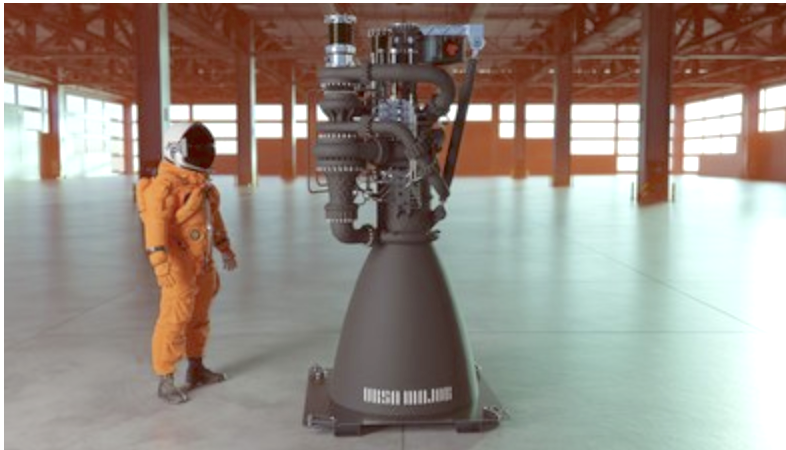
Notably, Arroway engines will be one of very few commercially available engines that, when clustered together, can displace the Russian-made RD-180 and RD-181, which are no longer available to U.S. launch companies.
Ursa Major, America’s only privately funded company that focuses solely on rocket propulsion, today introduced the latest in its line of engines. Arroway is a 200,000-pound thrust liquid oxygen and methane staged combustion engine that will serve markets including current U.S. national security missions, commercial satellite launches, orbital space stations, and future missions not yet conceived. The reusable Arroway engine is available for order now, slated for initial hot-fire testing in 2023, and delivery in 2025.
“Arroway is America’s rocket engine of the future,” said Joe Laurienti, founder and CEO of Ursa Major.
Notably, Arroway engines will be one of very few commercially available engines that, when clustered together, can displace the Russian-made RD-180 and RD-181, which are no longer available to U.S. launch companies.

Ursa Major’s other engines include “Hadley,” a 5,000-pound thrust, oxygen-rich staged combustion engine, and the 50,000-pound thrust “Ripley” engine. Hadley was the first American-made oxygen-rich staged combustion engine
“Arroway is America’s engine of the future,” said Joe Laurienti, founder and CEO of Ursa Major. “Medium and heavy launch capacity is what U.S. launchers desperately need right now, and because Ursa Major focuses solely on propulsion, we’re in a unique position to deliver high-performing, reliable, and affordable engines to meet the increasing market demand, just like we are doing with ‘Hadley’ and ‘Ripley’.”
Arroway uses a fuel-rich staged combustion architecture with liquid oxygen and methane propellants. Ursa Major designed the components and their arrangement so that most of the engine can be 3D printed. This approach allows for rapid iteration during the development process as well as efficient scaling of production to meet market demand.
Advantages of Liquid Methane Fuel
- Cleaner-burning, more efficient, and lower cost than kerosene
- Offers flexible architecture options to optimize for reusability
- Increasing market adoption in the launch industry
Advantages of Fuel-Rich Staged Combustion Architecture
- High performance on specific impulse and thrust-to-weight ratio
- Suitable for high reliability in mass production, long reusable life, and multiple applications
- Leverages Ursa Major’s experience in closed-cycle technology and provides extensibility to future propellant derivatives
“Arroway is the rocket engine that the industry needs, and Ursa Major is the right company to build it,” said Jeff Thornburg, former SpaceX propulsion executive and Ursa Major advisor. “Launch organizations should consider whether they have the in-house experience, expertise, time, money, test facilities, and organizational fortitude to build their own engines. Ursa Major has demonstrated all of that, and the result is a more rapid and robust product to market. The growing space industry is just starting to learn how difficult propulsion development can be and how long it really takes to qualify hardware in-house, which presents an incredible opportunity for Arroway to serve the industry.”
No Need to Build In-House
With Ursa Major’s experience making flexible rocket engines that can be used for a range of missions, from air launch, to hypersonic flight, to on-orbit missions with many restarts, its customers get to launch many years faster at a low price and without the development cost of building engines in-house.
The Ursa Major propulsion engineering team has more than 1,000 years of propulsion development experience and thousands of successful flights. It includes world-leading experts in combustors, engine cycles, and turbomachinery from the top American launch companies and engine development programs in the U.S. The company has built and tested more than 50 staged-combustion rocket engines to date and will deliver 24 of them by year’s end.
Ursa Major designs, tests, and manufactures its engines from its state-of-the-art facility in Berthoud, Colorado, using market-leading technology in analysis and simulation, 3D printing, and proprietary alloys. To date, Ursa Major engines have accumulated 36,000 seconds of run-time, far more than a typical engine is tested prior to first flight.
